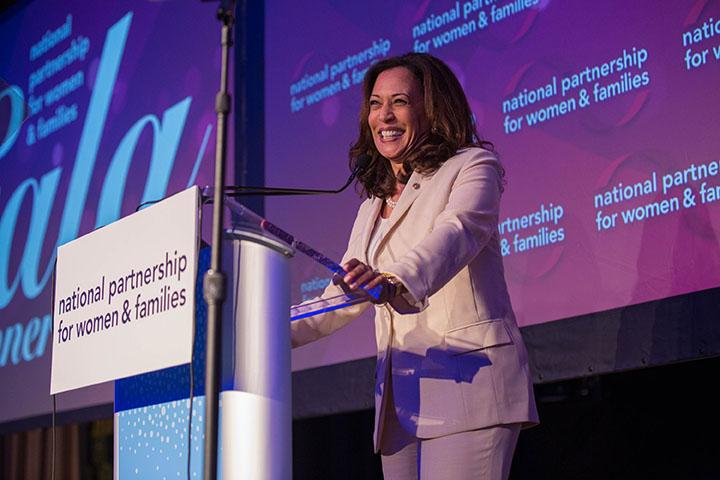Where I grew up in the beautiful Shenandoah Valley, access to reproductive health care – much like access to comprehensive care – has long been a challenge. Many rural women lack access to the full range of information and services they need to make the best decisions for themselves about if, when, and how to have children. When I was in middle school, my mom began working for a local outreach organization to improve sex education in my hometown of Harrisonburg, Virginia, which had a teen pregnancy rate almost triple the state’s average. While my mom teaching sex education to all my friends may not have made me the most popular girl in school, it did help make a tangible impact: the teen pregnancy rate in our area dropped by half. This change speaks volumes about the difference that access to reproductive health education and services can have in rural communities.
However, even in a state with relatively few legal barriers to abortion care like Virginia, access to reproductive care can still be out of reach for far too many. I’ve seen it in my own community. There are no abortion providers in my county or in those neighboring it, and only one center offers the full range of birth control options. The closest abortion clinic to my home is an hour away, separated by a mountain range. For people without reliable transportation, parents juggling childcare, and those working multiple jobs, this distance poses an insurmountable barrier to care.
Abortion bans and restrictions implemented since Dobbs v. Jackson Women’s Health Organization have only exacerbated logistical challenges for people in rural communities to seek reproductive care. Abortion clinics in protective states like Virginia are seeing increases in out-of-state patients, leading to longer wait times or having to turn away people seeking abortion care altogether. Many rural communities on the southern, southwestern, and western borders of Virginia already struggle to meet the reproductive health care needs of their own residents, let alone people who cross state lines to seek abortion care.
Three of the 14 states without a single abortion clinic – West Virginia, Kentucky, and Tennessee – border Virginia. This can mean that many people seeking reproductive health care from neighboring states have to cross state lines and travel deep into Virginia. This distance and the corresponding costs – including transportation, lodging, meals, child care, missed wages, and more – make accessing care very difficult for marginalized and low-income people.
The social and political climate in rural areas also influences the abortion access landscape. Social conservatism, religious ideology, and anti-abortion activism drive regional attitudes against sexual and reproductive health care, shape anti-abortion policies, and further stigmatize such care. Crisis pregnancy centers (also known as fake clinics) are prevalent in rural communities by design – weaponizing gaps in access to care to target rural women with anti-abortion propaganda. While these centers often present as viable alternatives to comprehensive reproductive health services, they are run by individuals with little to no medical experience. They misinform people about their reproductive health options and seek to dissuade them from seeking abortion care.
While rural women as a whole face all these challenges to reproductive health care access, rural women of color are especially likely to struggle. The majority of rural counties experiencing deep disadvantage (including adverse health outcomes and poverty) are Tribal lands, Southern regions with majority Black populations, and southwestern states with large Latine populations. Systemic underinvestment in rural areas and structural inequities in health care put care further out of reach for many Black, Native American, and Latine people in rural communities. This contributes to higher rates of unintended pregnancies, higher rates of maternal morbidity and mortality, and inadequate access to contraception and abortion among rural women of color.
Despite these systemic barriers, rural communities remain resilient through grassroots initiatives and mutual aid. In my experience, Appalachia may be critically underserved, but it is a region deeply-rooted in community values and mutual support networks. Organizations like the Blue Ridge Abortion Fund and the New River Abortion Access Fund work tirelessly to ensure abortion seekers in Virginia have the financial resources to obtain care, but the situation is still precarious. Abortion is not explicitly protected in Virginia’s state constitution, and recent efforts to further protect reproductive rights were vetoed by the governor. Rural communities in red, blue, and purple states need their elected officials to pass policies that ensure they are free to make decisions about their bodies, lives, and futures. Expanding access to family planning services, advancing reproductive rights, and enacting paid family and medical leave – among other health, economic, and racial justice measures – are key.
Now more than ever, we must turn to our communities, support networks, and grassroots organizations to support reproductive health care access. Rural abortion funds and local organizations – including ReproRising Virginia, Latina Institute for Reproductive Justice Virginia, Virginia Reproductive Equity Alliance in my home state – are helping to fill gaps in access to care, advocate for policy change, and keep reproductive health care services affordable for rural women. In the continued fight for reproductive health, rights, and justice, we must not forget the miles, mountains and barriers that stand in rural women’s path. We must go the distance to advance access to reproductive health care in rural communities.
Don’t miss the first of my two-part blog series on Appalachian women and reproductive health access, “Overburdened and Underserved: How Rural Women Fall through the Cracks.“


